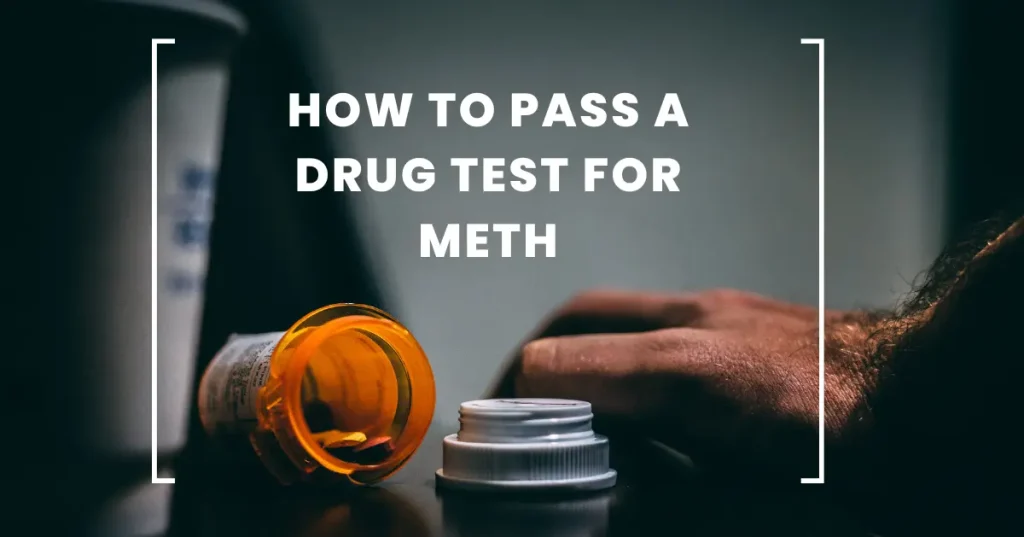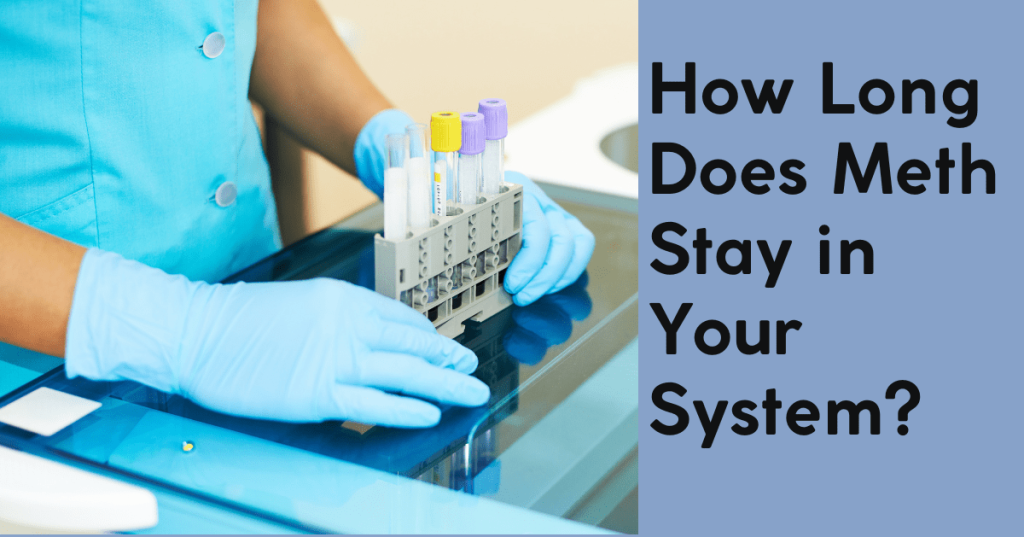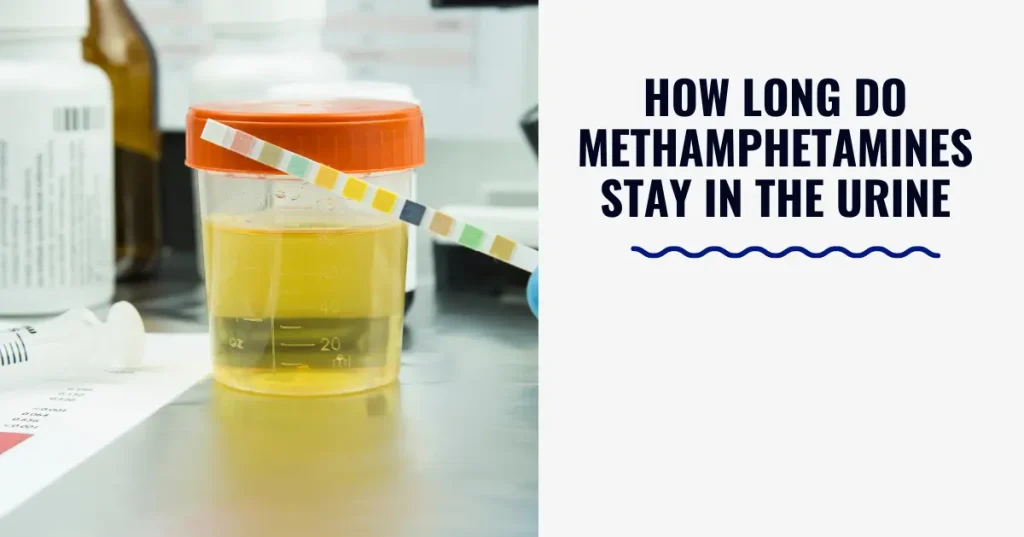Passing a drug test for methamphetamine is important. It’s because many jobs and activities need you to be drug-free. If you fail, you could lose your job or face legal trouble. Plus, using meth can be dangerous, especially if you’re doing tasks like driving or operating machinery. Passing the test shows you’re responsible and can be trusted. It also keeps you and others safe.
Failing could hurt your chances of getting a job or moving up in your career. It might even affect how people see you. And using meth isn’t good for your health either. It can cause serious problems, like addiction or heart issues. So, passing the test can be a wake-up call to get help if you need it. Overall, passing the test is crucial for following rules, staying safe, and taking care of yourself.
Detection Timeframes for Methamphetamine
The detection timeframe for methamphetamine, commonly known as meth, can vary depending on several factors.
- Urine Tests: Urine tests are one of the most common methods used to detect methamphetamine. Meth typically remains detectable in urine for approximately 1 to 4 days after use. However, for chronic or heavy users, methamphetamine may be detectable in urine for a longer period, ranging from 1 week to even several weeks after use. Factors such as hydration levels and kidney function can also influence detection times in urine.
- Blood Tests: Methamphetamine can typically be detected in the bloodstream for a shorter period compared to urine. In most cases, meth can be detected in blood samples for approximately 1 to 3 days after use. However, similar to urine tests, heavy or chronic methamphetamine users may have detectable levels of the drug in their blood for an extended period, potentially up to a week or more.
- Saliva Tests: Saliva tests are less common but can still be used to detect recent methamphetamine use. Methamphetamine is detectable in saliva for a shorter duration compared to urine or blood. Generally, meth can be detected in saliva for approximately 1 to 2 days after use.
- Hair Tests: Hair follicle tests have the longest detection window for methamphetamine. Methamphetamine can be detected in hair follicles for an extended period, typically up to 90 days or even longer after the last use. This makes hair follicle testing particularly effective for detecting past drug use over a more extended period.
Risks and Consequences of Failing a Meth Drug Test
Failing a methamphetamine drug test can have significant impacts.
- Legal Trouble: If you fail a drug test, you could face legal consequences, such as fines or even imprisonment, depending on the circumstances and laws in your area.
- Job Worries: Losing your job is a real possibility if you fail a drug test. It can be hard to find another job, especially if you have a record of failing drug tests.
- Money Issues: Losing your job means losing income. You may struggle to pay bills, buy food, or afford housing. Legal fees or fines for failing the drug test can add to financial strain.
- Personal Problems: Failing a drug test can strain relationships with family and friends. They might be disappointed or worried about you. You may also feel ashamed or isolated because of failing the test.
- Health Risks: Methamphetamine use can lead to serious health problems, including addiction, heart issues, and mental health issues like anxiety or paranoia. Failing a drug test may indicate ongoing or worsening substance abuse, putting your health at further risk.
- Family Matters: Failing a drug test can impact custody arrangements for your children. Child welfare services may get involved if they believe your drug use poses a risk to your kids. It can also cause tension and conflicts within your family.
Preparing for a Meth Drug Test
Preparing for a methamphetamine drug test is crucial to avoid any potential problems. First, it’s important to understand what type of test you’ll be taking, whether it’s a urine, blood, saliva, or hair test, and to follow any instructions provided. Knowing the detection times for methamphetamine in different types of tests is also important, as it gives you an idea of whether you might test positive.
To increase your chances of passing the test, stopping meth use well before the test is advisable, as it allows your body time to eliminate the drug. Drinking plenty of water can help flush out methamphetamine from your system, particularly for urine tests. Additionally, considering detox products or dilution techniques might be options, but it’s essential to research them carefully and not overdo it.
Understanding your rights regarding the test and having a plan in place based on your situation can also be beneficial. By taking these steps, you can be better prepared for a methamphetamine drug test and reduce the risk of any negative outcomes.
Steps to Pass a Meth Drug Test
Passing a methamphetamine drug test requires careful preparation and strategic action.
- Stop Meth Use: Cease using methamphetamine as soon as possible before the test. The longer you abstain from methamphetamine, the better your chances of passing the test.
- Stay Hydrated: Drink plenty of water to help flush out toxins from your body. Hydration can dilute the concentration of methamphetamine metabolites in your urine, potentially lowering the chances of detection.
- Consider Detox Products: Explore over-the-counter detox products designed to help rid your body of toxins. These products may include detox drinks, pills, or teas, but be cautious and research thoroughly before using any detox products.
- Practice Dilution Techniques: Diluting your urine sample by consuming excessive amounts of water or using diuretics (such as coffee or cranberry juice) can potentially lower the concentration of methamphetamine metabolites. However, be cautious not to over-dilute your sample, as overly diluted samples may be flagged as suspicious.
- Timing is Key: Plan your detoxification efforts and the timing of the drug test carefully. Allow sufficient time for your body to eliminate methamphetamine and its metabolites before the test.
- Know Your Test: Understand the type of drug test you will undergo (urine, blood, saliva, or hair follicle) and any specific instructions provided by the testing facility. Tailor your preparation accordingly.
Conclusion
Passing a drug test for methamphetamine takes careful planning and effort. Understanding detection times and following detox strategies can improve your chances of success. Remember to stay hydrated and consider detox products if needed. Knowing your rights and following test instructions are also important.
Passing the test can alleviate immediate concerns, but addressing substance abuse issues requires ongoing support. If you’re struggling with methamphetamine use, seek help from healthcare professionals or support groups. Remember, passing a drug test is just one step toward a healthier life. With determination and support, overcoming substance abuse challenges is possible.



